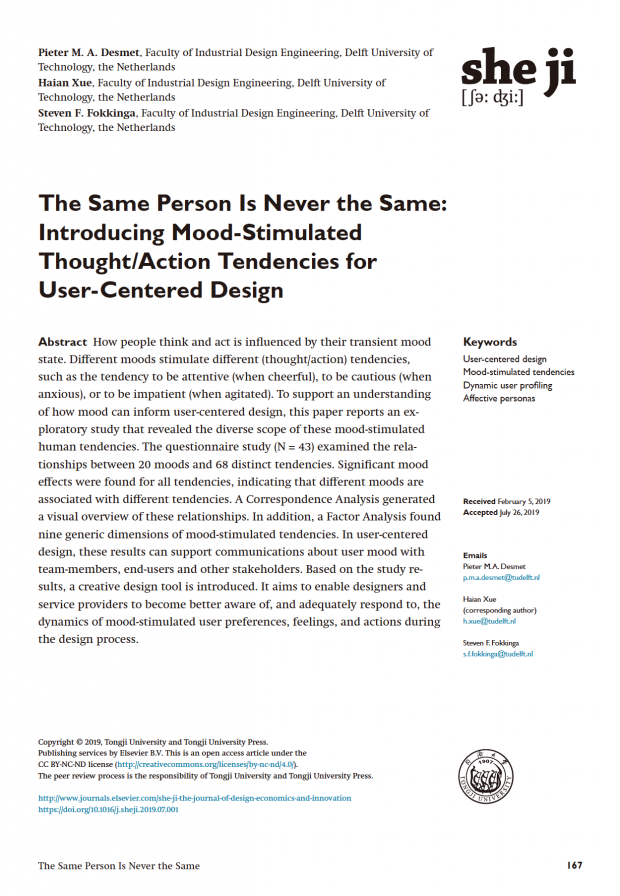Abstract
How people think and act is influenced by their transient mood state. Different moods stimulate different (thought/action) tendencies, such as the tendency to be attentive (when cheerful), to be cautious (when anxious), or to be impatient (when agitated). To support an understanding of how mood can inform user-centered design, this paper reports an exploratory study that revealed the diverse scope of these mood-stimulated human tendencies. The questionnaire study (N = 43) examined the relationships between 20 moods and 68 distinct tendencies. Significant mood effects were found for all tendencies, indicating that different moods are associated with different tendencies. A Correspondence Analysis generated a visual overview of these relationships. In addition, a Factor Analysis found nine generic dimensions of mood-stimulated tendencies. In user-centered design, these results can support communications about user mood with team-members, end-users and other stakeholders. Based on the study results, a creative design tool is introduced. It aims to enable designers and service providers to become better aware of, and adequately respond to, the dynamics of mood-stimulated user preferences, feelings, and actions during the design process.
Citation: Desmet, P. M. A., Xue, H., & Fokkinga, S. F. (2019). The Same Person Is Never the Same: Introducing Mood-Stimulated Thought/Action Tendencies for User-Centered Design. She Ji: The Journal of Design, Economics, and Innovation, 5(3), 167-187. doi:https://doi.org/10.1016/j.sheji.2019.07.001




